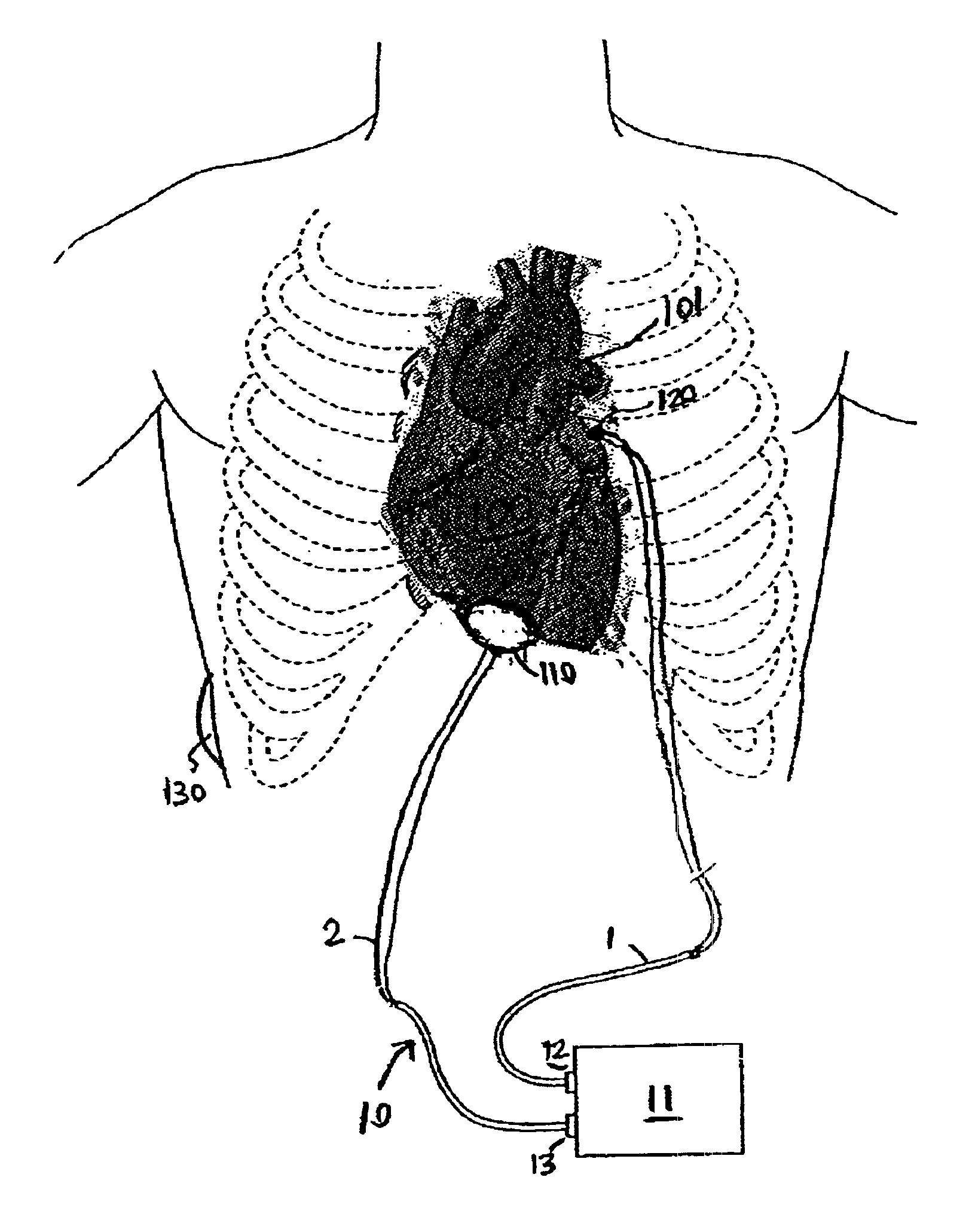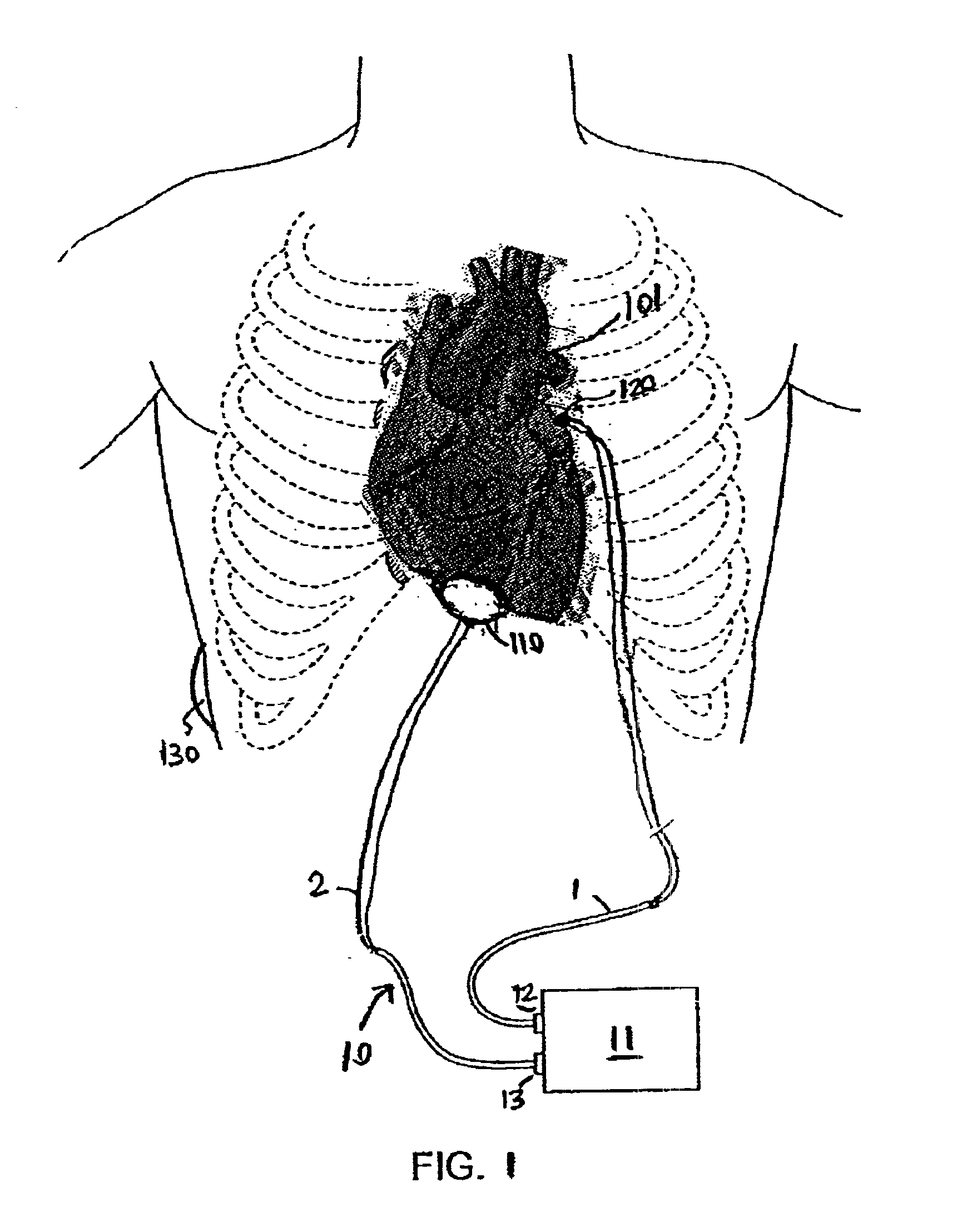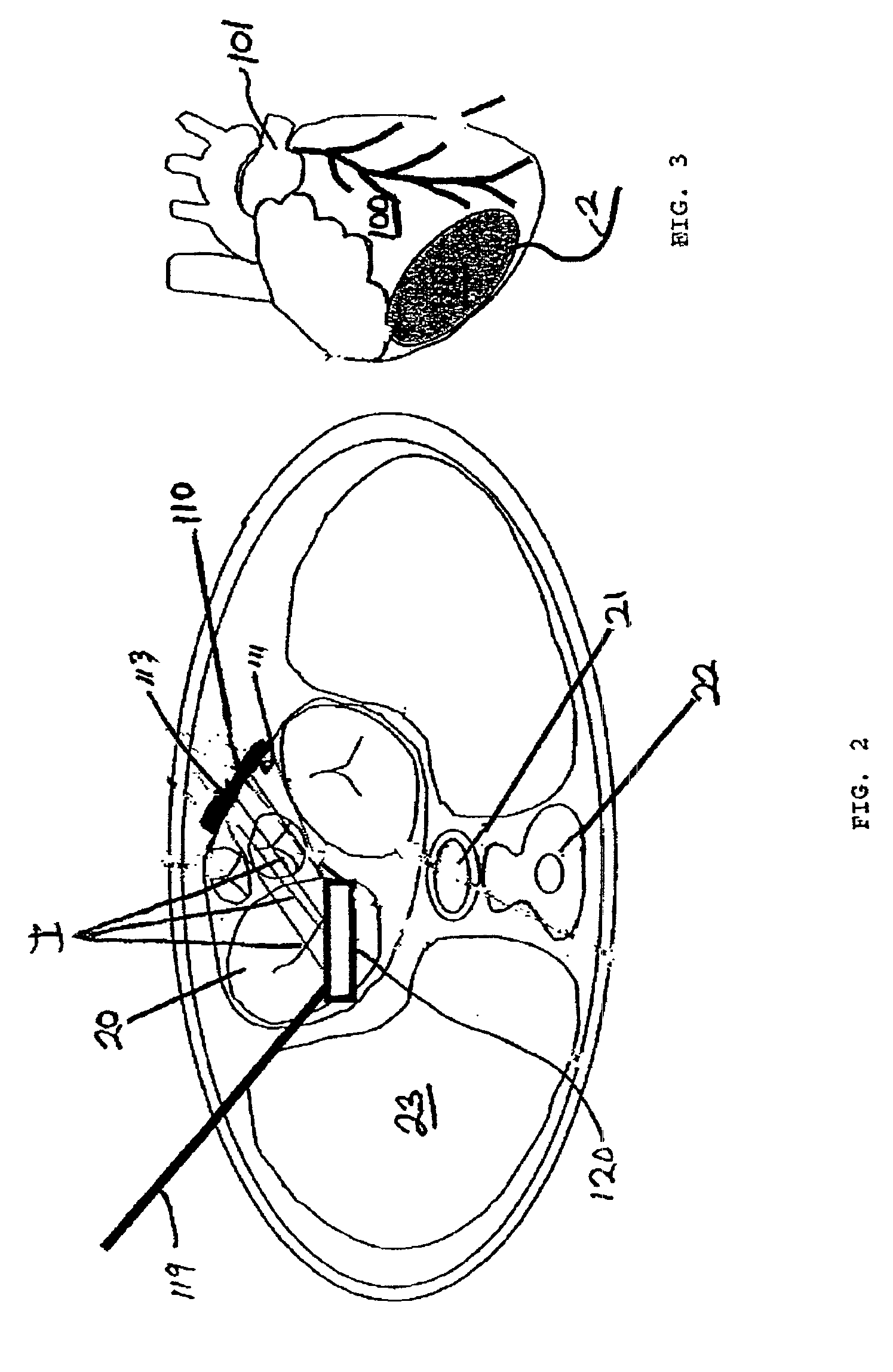Expandable intracardiac return electrode and method of use
a return electrode and expandable technology, applied in the field of atrial fibrillation system and method treatment, can solve the problems of increasing the risk of collateral damage, and increasing the risk of cardiac injury, so as to facilitate safe and effective ablation procedures and minimize the potential for collateral damag
- Summary
- Abstract
- Description
- Claims
- Application Information
AI Technical Summary
Benefits of technology
Problems solved by technology
Method used
Image
Examples
example 1
[0080]A patient is prepared for cardiac surgery in a conventional manner using conventional surgical techniques. The ablation procedure is performed on the patient's heart using a device having an active electrode and a return electrode in accordance with the present invention. A blood chamber in the heart, typically the left atria, is accessed using an atrial well. The return electrode is introduced into the atrial cavity through the atrial well, whereby the return electrode is retained in the retracted position. Once the return electrode is positioned in the desired region of the heart, the electrode is moved to the expanded position. The active electrode is then applied to an epicardial surface of the heart. Ablative energy can then be transmitted from the active electrode through the cardiac tissue and to the return electrode to form a lesion in the tissue.
PUM
 Login to View More
Login to View More Abstract
Description
Claims
Application Information
 Login to View More
Login to View More - R&D
- Intellectual Property
- Life Sciences
- Materials
- Tech Scout
- Unparalleled Data Quality
- Higher Quality Content
- 60% Fewer Hallucinations
Browse by: Latest US Patents, China's latest patents, Technical Efficacy Thesaurus, Application Domain, Technology Topic, Popular Technical Reports.
© 2025 PatSnap. All rights reserved.Legal|Privacy policy|Modern Slavery Act Transparency Statement|Sitemap|About US| Contact US: help@patsnap.com



